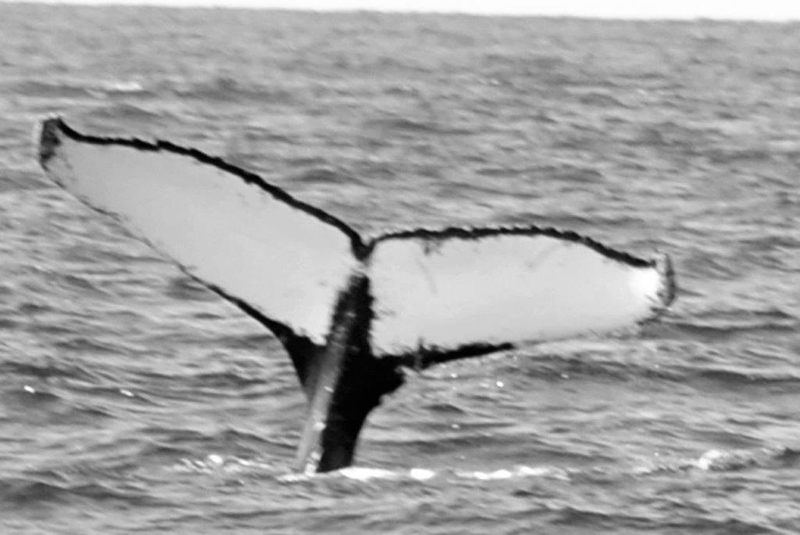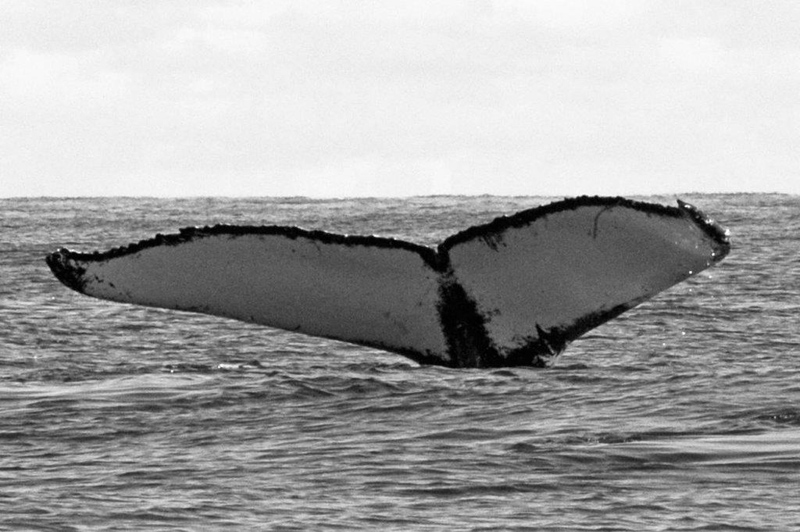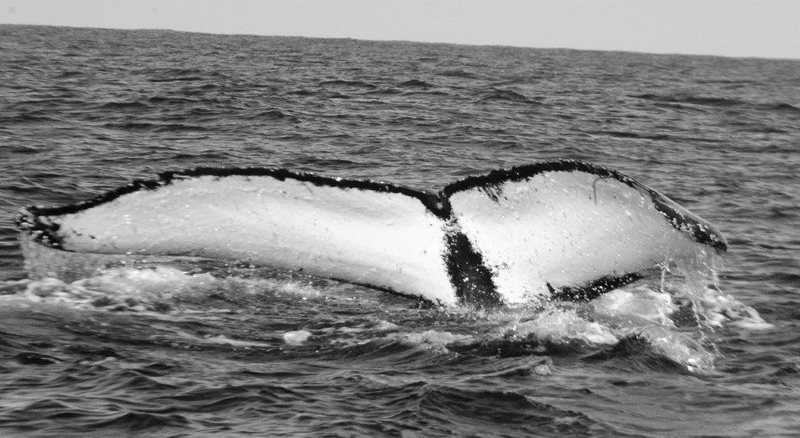Stevenson: Over 200 Whales Identified So Far
Speaking in advance of the screening of his documentary film “Secret Lives of the Humpbacks” tomorrow, whale researcher Andrew Stevenson said that this has been his best year for identifying individual whales, with well over 200 identified so far.
Mr. Stevenson told Bernews, “Despite the inclement weather during the peak whale watching season, this had been my best year for identifying individual whales by the unique black and white pattern on the underside of the tail. So far we already have well over 200 individual animals identified with many repeat sightings to previous years.
“What is becoming increasingly clear from the database of over 1,600 humpback whales identified in Bermuda alone is that the humpbacks are not simply passing by our island on the way north.
“The open ocean and in particular the sea mounts, are as an integral part of the humpbacks’ lives as their feeding grounds up north or their breeding grounds down south. It is also clear that the humpback numbers are increasing since commercial hunting of humpbacks ended some decades ago. But the humpbacks still face dangers including entanglement, ingesting plastic and boat strikes.”
Mr Stevenson, who has a research permit from the Bermuda Government and a SUA drone license issued by the Bermuda Civil Aviation Authority, has gathered a wealth of footage including the video below showing a short clip of the mother and calf coming up.
“Looking at the tiny size of the calf and the vast ocean it has to travel through gives one a bit of perspective on why they come to the shallow waters of Bermuda to rest and for the mother to nurse her calf for some days before the onward journey northwards which could be as much as two thousand miles,” he explained.
“This is great news that the numbers are healthy, but as whale watching becomes increasingly popular there are growing numbers of boats chasing after whales so that people jumping in the water can swim with humpbacks.
“Last weekend eight boats surrounded a mother and calf. Swimmers from at least three of these boats attempted to get close to the mother and calf who were also accompanied by three highly active males.
“For a calf which has travelled almost a thousand miles through stormy seas to reach the relatively shallow and protected waters of Bermuda, it needs to rest and nurse from its mother before continuing its migration, without being disturbed or harassed.
“Often we witness groups of five or more whales in a competitive group of males vying for the attention of a female. These animals are huge and when they have their own agenda they aggressive and will breach or lobtail of chin slap and they are not concerned about anything else in the water but the female they are pursuing. Yesterday I witnessed a boat continuously try to get ahead of the group and drop divers in the water with these highly energetic whales.”
“Over the years I have developed a healthy respect for the humpbacks, both for their intelligence and their power. But just like humans, they can make mistakes. And just like humans, some whales can, for various reasons, be aggressive. The guidelines for whale watching in Bermuda are there for a reason. To protect the whales and human lives.”
Mr Stevenson will be showing his sequel documentary film to “Where the Whales Sing” at Specialty Cinema on Wednesday [April 10] at 5.30pm and 7.30pm. Tickets to “Secret Lives of the Humpbacks” can be obtained by phoning 295-2751 after 11 am.
The photos below, taken by Mr Stevenson, show one whale that was recorded in Bermuda four times over the past few years; on March 21 2012, March 23 2015, March 8 2017 and earlier this month [April 8] with a tiny calf. The researcher noted that this is just one identified whale in a catalogue containing over 1,650 individual whale IDs obtained here in Bermuda in the last thirteen years.
Read More About
Category: All, Environment, News






I agree with Mr. Stevenson regarding tour boats chasing whales to hopefully get that “great shot of me swimming next to a giant whale!” — how many “likes” do you need before your life is ended because a whale did not care that you were in the way? Stay at a decent distance, keep the motors quiet and enjoy seeing them breach from a distance! You mobile phone camera will capture a great video that you can share — and you get to live and see it too!
Seriously, be respectful to the whales.